A rat king forms when the tails of many rodents become tangled together, creating a disturbing creature that moves as one swarming mass of terror.
Few creatures are as historically reviled as the rat. It’s known for carrying disease and was blamed for spreading the Black Death in the mid-14th century. The mere mention of its name is enough to incite fear and revulsion in many.
Given the historically unforgiving associations people have with the rat, it’s no wonder that some have imagined it to have abilities and behaviors that are flat-out unbelievable. Case in point: the “rat king.”
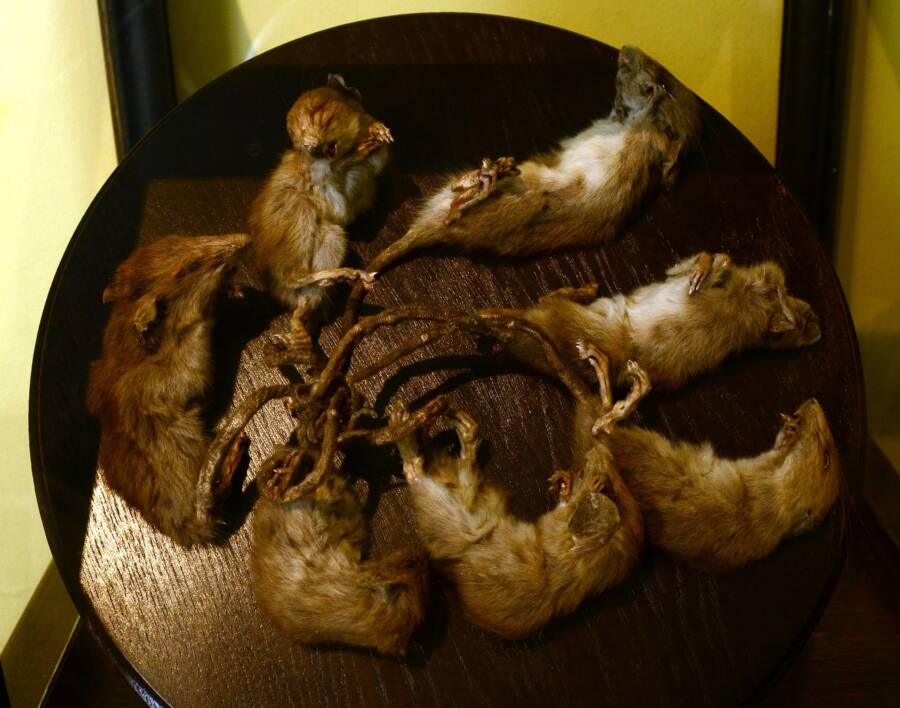
Wikimedia CommonsA purported rat king on display at the Maastricht Natural History Museum in the Netherlands.
Put simply, rat kings refer to a bunch of rats whose tails have become entwined, effectively creating one gigantic super-rat.
While many scientists have said that rat kings are not real and dismissed the phenomenon as nothing more than folklore, various specimens are on display in museums across the world. Furthermore, sightings have been documented as recently as 2021 in Russia and Estonia, with the evidence even captured on video.
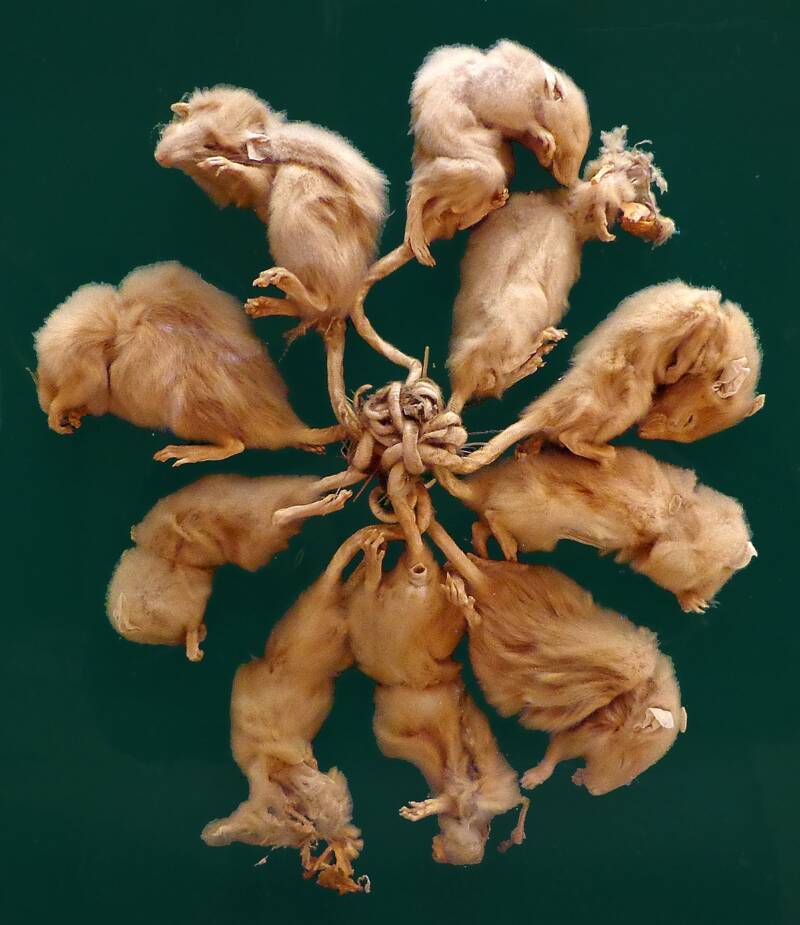
Strasbourg Museum“Rat king” is a term used to describe a group of rats whose tails became entangled, like this specimen found in France in 1894.
So what are rat kings, are they in fact real, and how might they come to be?
What Is A Rat King And How Does It Form?
Rat king sightings date as far back as the 1500s, with most taking place in Europe. Those who hold that the phenomenon is real, say that it occurs when a group of rats, while confined to a small space such as a burrow or other cramped living quarters, simply becomes matted together.
Others suggest that survival efforts yield the furry amalgam. During particularly cold seasons, the rats will intentionally “tie” their own tails to one another in order to stay huddled and warm.
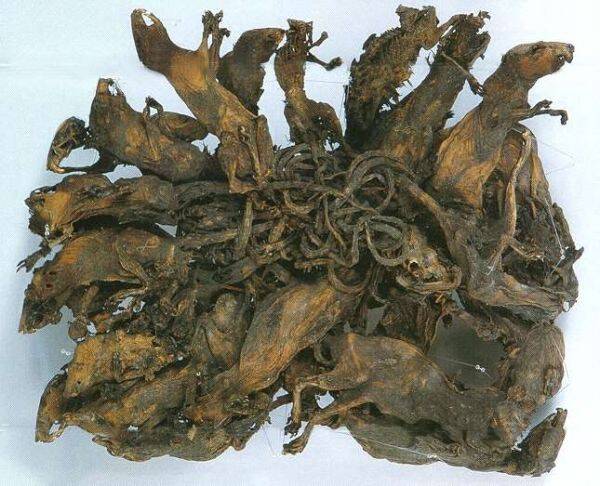
Wikimedia CommonsThis is the largest “rat king” specimen ever recorded, with 32 rats. It was discovered in 1828 and is still on display in Altenburg, Germany.
The phenomenon is made all the more believable because rats, like humans, produce sebum, or natural oil, in order to protect and hydrate the surface of their skin. It is thus possible that the oily tails of a dozen or so rats could form a sticky substance and bind the rats together.
However, as senior curator of mammals at the Museum Victoria in Australia, Kevin Rowe, told Atlas Obscura, “Rodents stuck together could not survive long and are probably in agony and distress until they separate or die.”
Still, other believers in the rat king suggest that urine or feces helps to bind the tails together. And some evidence suggests that this could be true: A 2013 discovery of a “squirrel king” in Saskatchewan, Canada revealed a six-squirrel amalgam, the cause of which researchers attributed to tree sap.
Are Rat Kings Real? Why Some Have Debunked This Phenomenon
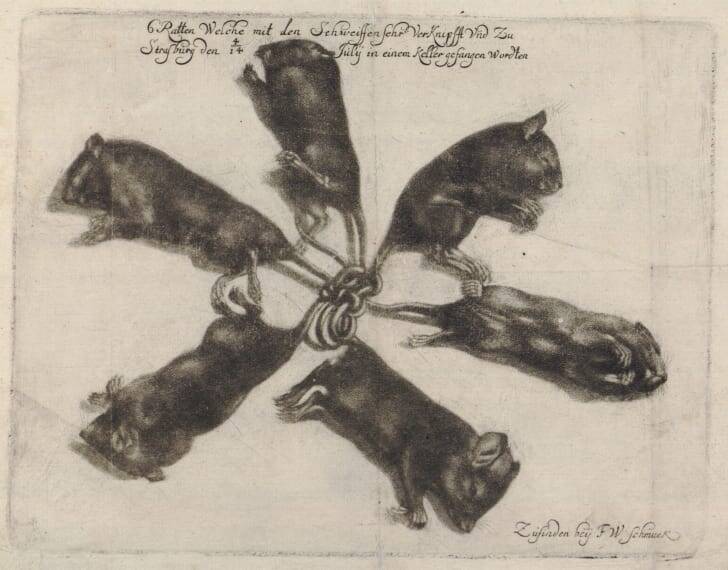
Wikimedia CommonsAn illustration by Wilhelm Schmuck of a rat king found in 1693.
Luckily for any rats who may find themselves in such unusual circumstances, experts doubt that they would get so far as to the point of meeting such a painful end, as their tails would simply unravel at the first suggestion of separation.
Should a bundle of rats in close proximity form a rat king in an effort to stay warm, some speculate that the newly-formed super-rat would simply unfold as soon as the cold weather passed. At the very worst, the formation would lead an individual rat to simply chew off its tail and exit the knot.
In 1883, a German zoologist named Hermann Landois tried to prove the possibility of rat kings by tying the tails of 10 dead rats together. During his experiment, Landois noted that he was not alone in his endeavor and that there were some who intentionally tied rat tails together for profitable spectacle.
“[It was] lucrative to own a king, and so people began tying tails together… many such sham kings were exhibited at fairs and similar gatherings,” Landois said.
But if rats can in fact untangle themselves from one another, then what is the explanation for rat kings on display in museums? Indeed, according to one scientific paper published on the phenomenon, there have been 58 “reliable” rat kings recorded through history, six of which are on display.
Famous Rat Kings On Display And Recent Sightings Around The World
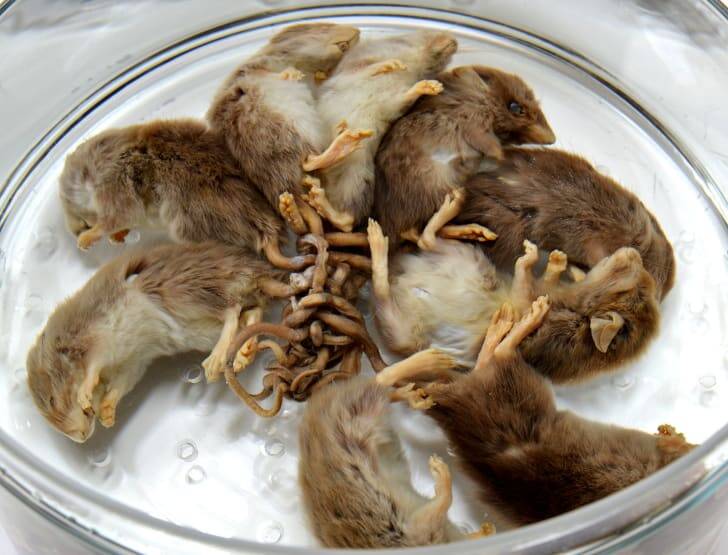
Patrick Jean / Muséum d’Histoire Naturelle de NantesA specimen found in 1986, now on display at the Natural History of Museum in Nantes, France.
Perhaps the oldest rat king on display is the specimen found in Altenburg, Germany, in 1828. It contains 32 rodents and is the largest specimen in the world. According to the museum, the clump was found by a man named Miller Steinbruck of Thuringia, Germany, while cleaning his chimney.
The earliest mention of a rat king is credited to Johannes Sambucus, a Hungarian historian, who recorded that his servants discovered seven rats with knotted tails in Antwerp, Belgium. Then in 1894, a frozen clump of 10 rodents was found under a bale of hay in Dellfeld, Germany. That specimen is now on display at the Strasbourg Zoological Museum.
While all these specimens reportedly formed naturally, there are some that are admittedly manmade — and not just due to some tinkering scientist tying tails together.
In the case of the rat king housed in the Otago Museum in Dunedin, New Zealand, for example, curators say that their gruesome amalgam formed when the rats became entangled in horsehair. They then fell from the rafters of a shipping office and were beaten to death with an instrument and thus “mashed” together.
But because it’s difficult to prove if any single specimen is authentic, it is likely that the rat king will continue to spark debate.
Recent Evidence Of A Real Rat King
In late 2021, a veterinarian in Tartu, Estonia named Johan Uibopuu uncovered a rat king at his mother’s chicken coop. Made up of 13 rodents bound together by their tails, this rat king was the rare specimen that was actually caught on video while it was still alive.
However, upon its discovery, two of the rats were already dead and the rat king had to soon be euthanized in order to end the survivors’ suffering. Afterward, Andrei Miljutin of the Natural History Museum at the University of Tartu took the specimen for analysis and eventual display.
Uibopuu and Miljutin aren’t sure how this rat king formed, but they suspect the rats became entangled when huddling together for warmth inside a tunnel underneath the coop. But regardless of how it was formed, the sighting sparked widespread revulsion and disbelief online. Such is the fate of the rat king, one of the most storied and grotesque creatures in the animal kingdom for centuries.
After this look at rat kings, learn about the gruesome rat torture method. Then, meet the strangest animals on planet Earth.





